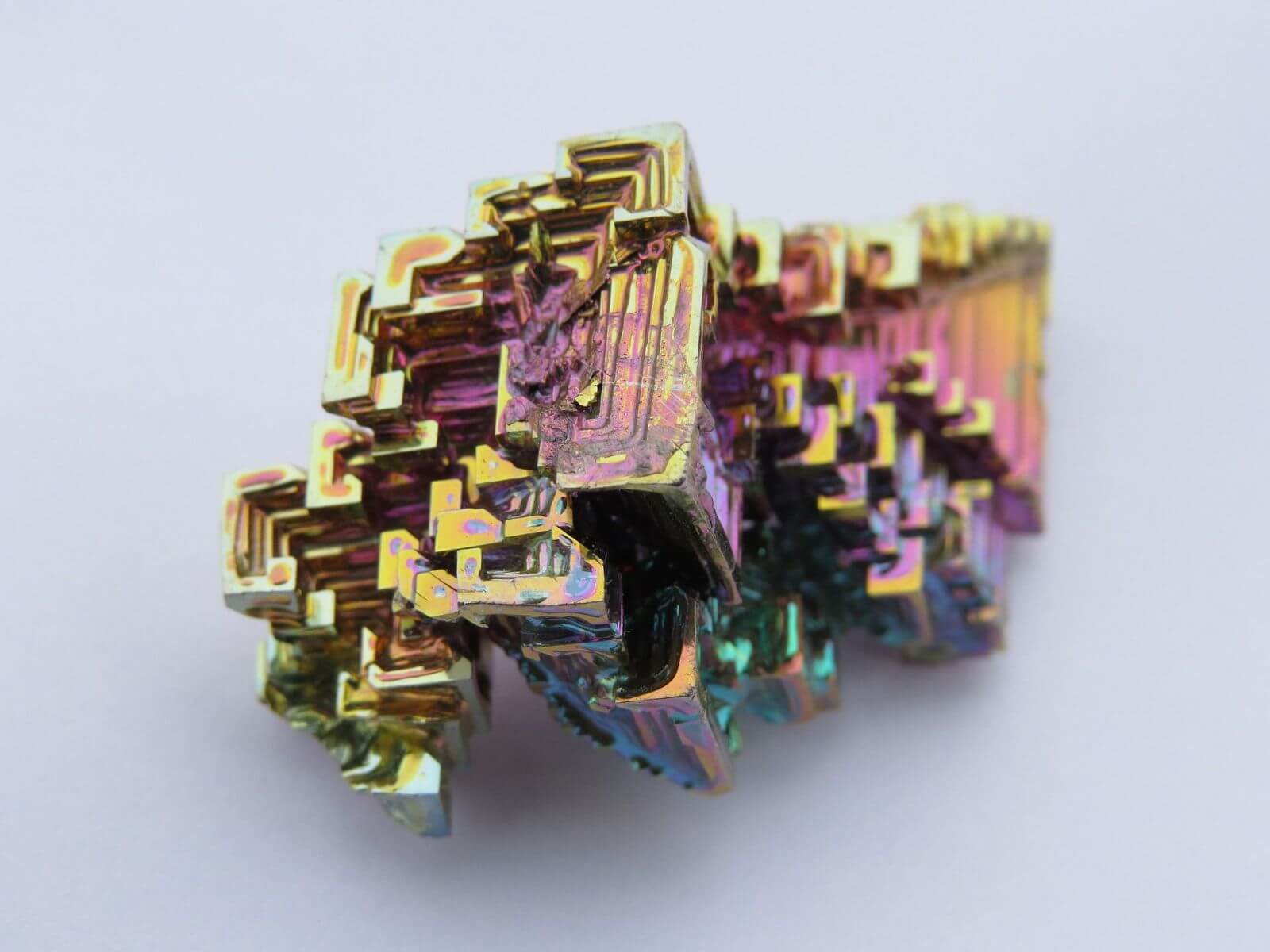
Element of the Month for February: Bismuth
The use of Bismuth is known for centuries already. Even the Incas used bismuth. They combined it with other metals such as copper and tin to manufacture knives. In ancient Egypt it was mainly used in cosmetic applications. Industrial production of bismuth began in 1830. Today bismuth is sure to be found in your household as well, because due to its low melting point it is used in fire alarms and fire extinguishers.
Bismuth is an anisotopic element and only occurs in nature in the form of a stable isotope. The silver-white heavy metal with a reddish tinge is a good conductor of heat but poor electrical current. It shows the greatest diamagnetism of all metals.
Bismut forms alloys with silver, gold, copper, mercury, lead, tin and platinum metals, which, like the metal itself, have a negative coefficient of expansion. Bismuth is stable at room temperature, but is superficially oxidized in a humid environment. Under extreme heat, the metal burns in air with a blue flame to form yellow bismuth(III) oxide.
Bismuth: main occurrence and production:
The metal is widespread in nature. Its main deposits are in South America, Mexico, Spain, Canada, Australia and China. It is usually obtained as a by-product in the smelting of heavy metal ores.
There are several ways to do this:
- Reduction work: Oxidic bismuth ores are reduced with coal in crucible or flame furnaces.
- Roasting reduction process: Sulphide bismuth ores are roasted at 500 degrees. The oxide is then reduced with carbon.
- Precipitation process: Sulphide bismuth ores are reduced with iron. The raw bismuth is freed from admixtures such as arsenic, lead and iron. This is followed by a zone melting process, which produces bismuth with a purity of 99.999%.
Alloys, catalysts and pharmaceutical products
Bismuth is primarily used to make easily fusible alloys, for example with lead and tin. These alloys are mainly used as soft solders, heating bath liquids for the construction of safety fuses, safety locks and fire alarm systems. The chemical industry uses bismuth as a catalyst or for the manufacture of electrodes for pH measurements. A large part of the metal is also used in the manufacture of pharmaceutical bismuth preparations. Bismuth subnitrate for example has a disinfecting and hemostatic effect. In addition, Bismuth compounds are used as a coloring agent in lipsticks, mascara and similar cosmetic products.





 4c media
4c media